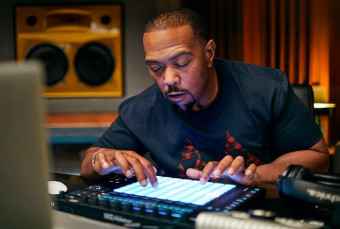How To Hire The Right People For The Right Jobs
Tags: Hiring
A Manager's Guide to Hiring Quality Personnel
Last updated 2022-01-10 | 4.5
- This program provides the training- tools and resources needed to improve your hiring skills. It covers both technical and soft skills training and it connects hiring managers to their Human Resource (HR) departments to achieve the best possible outcome for the company. Also
- the materials are helpful for small businesses looking to develop their HR hiring processes.
What you'll learn
* Requirements
* Basic understanding of hiring personnelDescription
How to Hire the Right People for the Right Jobs is a training program designed for managers to improve their hiring skills. Hiring personnel is one of the most important job functions you will ever have in your career, yet it is seldom formally taught and often perfected through trial and error. The goal of this program is to provide a framework for improving your hiring skills using proven method techniques as well as soft skills training to ensure you are considering everything each candidate has to offer. The people you choose to join your team will directly affect you, your career path, your department, and the company at large. How well and how seriously you approach this responsibility will affect your own personal success. Hiring talent is a learned skill, and the most productive and successful teams are led by managers who commit due diligence to the hiring process. Don’t leave hiring up to chance without a plan! This program provides the training, tools and resources needed to improve your hiring skills. It covers both technical and soft skills training and it connects hiring managers to their Human Resource (HR) departments to achieve the best possible outcome for the company. Also, the materials are helpful for small businesses looking to develop their HR hiring processes. We hope you enjoy the course and may your next hire be your best hire!
For group training opportunities on this topic, please contact [email protected].
Who this course is for:
- Hiring managers and any leadership positions responsible for hiring employees
Course content
25 sections • 25 lectures
Introduction to How to Hire the Right People for the Right Jobs Preview 02:45
How to Hire the Right People for the Right Jobs is a program that provides a framework for improving your hiring skills. We begin by giving an overview of the full program. Next, we highlight how becoming an effective hiring manager is a skill that can be taught, and even improved upon. Then, we cover why hiring quality employees is so incredibly important to you and your company. Being a successful hiring manager will secure your role as a top-notch manager and it will ensure the growth, profitability and success of your company as a whole.
How This Program Can Help You Hire Effectively Preview 04:08
In this chapter, we address the different ways this program can benefit people at different stages in their careers. From a first-time hiring manager to a seasoned veteran, this program can help you to hone your skills, get you up-to-date on the latest recruitment techniques, and invigorate your passion and excitement to hire the very best candidates available. Bottom line, this program will help you no matter where you are in your career.
The Basics of Interviewing Preview 02:14
As you well know, it is your job to hire the right person for the right job. The way you do this is to be prepared, organized, and even practice how you plan to do a live interview. Great candidates are not hired by chance! They are found by hiring managers who are prepared and actively looking for excellence. That is exactly what this chapter is all about. We illustrate how to know precisely what you are looking for and think through how you might gather that information, beyond what is written on a resume. We also cover what you need to practice before you meet with a candidate.
The Importance of Your Role Preview 05:14
A hiring manager’s role is important because choosing the right person can make or break your company, and quite honestly, it can make or break your career as well. Your goal should be to find people who can not only do the job well but who are passionate about your company. We provide guidance on how you can identify your hiring needs in order to hire the right people for the right jobs. In this chapter, we cover how to evaluate your top performers to identify common traits of a successful employee. Next, we cover how to create effective job descriptions, identify potential career paths, and highlight how to focus on a candidate’s potential and enthusiasm.
Compensation vs. Performance Preview 06:02
The cost of employment is on the rise, so it is important that you focus on hiring top talent to compensate for this increased cost. In order to do this, you will need a clear understanding of your departmental landscape. Through performance analysis, you can identify talent gaps and create a roadmap for positions needed now and in the future. This chapter provides guidance on how to navigate this necessary step.
Preparing to Interview Preview 06:20
Preparation is key when it comes to hiring great job candidates. In this chapter, we cover the beginning stages of the interview process, from finalizing the job description, to working with HR to determine an offer package, to posting the position, and even creating your Interview Portfolio Kit. Once you have everything prepared, then you are ready to start receiving applicants and reviewing who you are interested in meeting with.
Narrowing Your Candidate List Preview 12:03
Properly narrowing your candidate list will help you select the top candidates to interview, and potentially hire. In this chapter, we cover how to identify the best candidates over the best resumes, how to review their social media presence and LinkedIn profiles, and how best to vet internal candidates.
Interviewing to Fit Your Personality Preview 05:49
We firmly believe that you need to be yourself when interviewing candidates. Yes, HR will have guidelines on what they expect and what you can and cannot ask. By all means, use that information, but find a way to deliver it in a way that is natural to you. The more comfortable and confident you are when speaking with a candidate, the better the interview will go. Plus, you’ll inspire great candidates to really shine and the weak ones to become more obvious. We provide ways to mix and match different interview style questions to create a comfortable yet productive conversation.
Interview Styles to Consider Preview 10:56
In this chapter, we cover different interview styles to consider. Each has a purpose for drawing out specific information on a candidate and we suggest that you adopt a blended interview style that best fits your personality. We cover the benefits of each type and you can consider what is best for your needs.
Interview Planning Preview 03:14
Now that you have a better understanding of the different interview styles to consider, now you need to put together an interview plan. Your first step is to create an Interview Questionnaire Form and we have included a sample form for your reference. This form is vital to hiring the best candidate! It will help you define exactly what you are looking for and it gives you a standard for comparing candidates. Lastly, we review the steps necessary to select your interview questions, provide tips for reviewing resumes, help you prepare your introduction speech, and stress the importance of practicing.
Interview Questionnaire Form – This form helps you prepare for the interview, develop and maintain a standard for comparing multiple candidates, and offers a consistent rating system.
Pre-Screening Interviews Preview 07:30
Pre-screening interviews are popular when there are large numbers of qualified candidates to whittle down, or when your travel budgets are low. These include phone interviews, video interviews, and job fairs. In this chapter, we provide tips for navigating your pre-screening interviews.
The Face-to-Face Interview Preview 09:08
We call the face-to-face interview SHOWTIME because this is where all the drama, candidate posturing, job understanding, personality profile and final candidate selection takes place. In this chapter, we give you all the steps you need to follow during a face-to-face interview in order to identify top talent.
Why Candidates Show Up to an Interview Preview 07:10
Understanding a candidate’s motivation for interviewing is very helpful. You have to be strategic as to how you get that information, within legal boundaries, but your previous efforts of being prepared and ready with your questions will help you. In this chapter, we cover actively listening during an interview, your follow-up actions once the interview is complete, and how to rate candidates.
Identifying Candidates Who Want the Job Preview 05:18
The best candidates truly want the job and will have done 3 things: RESEARCH – PREPARATION – PRACTICE. In this chapter, we teach you how to identify these candidates and give you specific things you must look for during the interview process.
Evaluating a Candidate's Knowledge Preview 05:43
Evaluating a candidate’s knowledge will depend on the job you need to have filled. Highly skilled positions require different expertise and knowledge than jobs needing interpersonal skills. We teach you how to distinguish between the two and identify what competencies are needed for your available position. Another important aspect of evaluating a candidate’s knowledge is to check their references. We provide a detailed guide for checking references to gather information on a candidate.
Reference Checking Guide - This guide walks you through the full process of checking references and we provide sample questions.
Questions You CANNOT Ask in an Interview Preview 06:24
When it comes to interviewing job candidates, employers and hiring managers need to know certain information to ensure that the person they are interviewing is the right fit for the job, and that they are legally able to work for the company. But, because of U.S. federal laws governing what may, or may not, be asked of a candidate in an interview, it is very important how a company approaches these personal subjects. In this chapter, we provide an overview of the U.S. Equal Employment Opportunity Commission and the laws governing hiring discrimination practices. We also have a resource called “Questions Interviewers CAN and CANNOT ask.” Understanding this information protects you, your company, and the candidates interviewing for a position.
Questions Interviewers CAN and CANNOT Ask - We have provided 30 interview questions that interviewers are legally able to ask, along with 30 questions you CANNOT ask. We’ve grouped them by general topics. These questions address citizenship, language, religion, marital status, and other topics.
Best Interview Questions to Ask Candidates Preview 05:04
Asking the right questions during an interview helps you better understand a job candidate and it can keep you out of legal trouble. In this chapter, we explore how and what you should ask to gather the most amount of information from a person. We have created a list of some of the best interview questions to ask and we encourage you to review this list when creating your Interview Questionnaire.
Best Interview Questions to Ask Job Candidates – We have put together a resource that reviews all the steps needed to prepare for an interview, and we have provided nearly 40 of the best interview questions to ask job candidates. This resource should be used in conjunction with your Interview Questionnaire Form.
Responses to Questions You Ask a Candidate Preview 03:16
A candidate’s response to your carefully crafted interview questions will give you the insight you need to assess their knowledge, competency, attitude, and overall presentation. In this chapter, we explain what aspects of their answers you need to pay attention to, as well as any visual cues you should be looking for when sitting face-to-face with a candidate.
Using Associates to Help Evaluate a Candidate Preview 06:18
Never underestimate the value of an associate’s second opinion! There are basically three types of second opinion contributors. There are those that will have some type of working relationship with the candidate through inter-departmental projects, those that have no vested interest as to whether or not you hire the candidate, and those who must work directly with the candidate as a team member for most of the day. In this chapter, we will review each type of contributor and highlight the value they bring to helping you find the right candidate for the right job.
Things to Consider Between Final Qualified Candidates Preview 04:08
Deciding on your final candidate is a real accomplishment! Up until this point, you have done lots of work. You have identified your hiring needs, you’ve written a detailed job description, you have received applicants, you have pre-screened individuals, you have formally interviewed candidates, and you have even called their references. This is a ton of work but it is absolutely worth the effort. Your next step is to decide between your final qualified candidates. In this chapter, we will provide guidance on narrowing your choices to your top 2 candidates and we give advice on how to decide on your first choice.
Making an Offer Preview 06:56
This chapter provides guidance on how to effectively make a job offer to a candidate. First, we cover the steps you need to take when crafting your offer. Next, we provide tips on how best to extend the offer. And lastly, we give guidance on how to handle candidate responses.
Informing Candidates Who Did Not Make the Cut Preview 06:14
When it comes to candidates who did not make the cut, do the right thing and let them know directly. We provide guidance on how to notify these candidates and the best way to deliver the information with respect and professionalism. We realize that this is not a fun process but it is a necessary step to completing the hiring cycle.
Preparing a New Hire to Join the Team Preview 05:46
Your final candidate must have a clear understanding of exactly what you and your company expects of them, and all of your employees. We review the importance of a formal offer letter as well as developing your Employee Handbook to establish clear direction on your expectations.
Supervisory Leadership Tips Preview 03:11
Leadership of employees in the workplace is an every minute, every day responsibility on your part. We provide guidance on how to be an effective leader to this new candidate as well as your existing team. Remember, a good team is the reflection of a strong leader. You need a solid functioning team. Teamwork makes the dream work!
Conclusion to How to Hire the Right People for the Right Jobs Preview 02:28
Effective, productive, well-managed organizations begin and end with the leadership principles set forth by the manager at the helm. As a manager, it is your job to hire the right people for the right jobs and then transition new employees into your team harmoniously. There is no magic to achieving this unity. It takes detailed preparation by managers, a willingness to spend time searching for the right people, and then executing tried and proven interview processes and procedures. In this segment, we conclude our thoughts on how to hire talented individuals and then position them for success within your team.








 This course includes:
This course includes:
![Flutter & Dart - The Complete Guide [2022 Edition]](https://img-c.udemycdn.com/course/100x100/1708340_7108_5.jpg)















